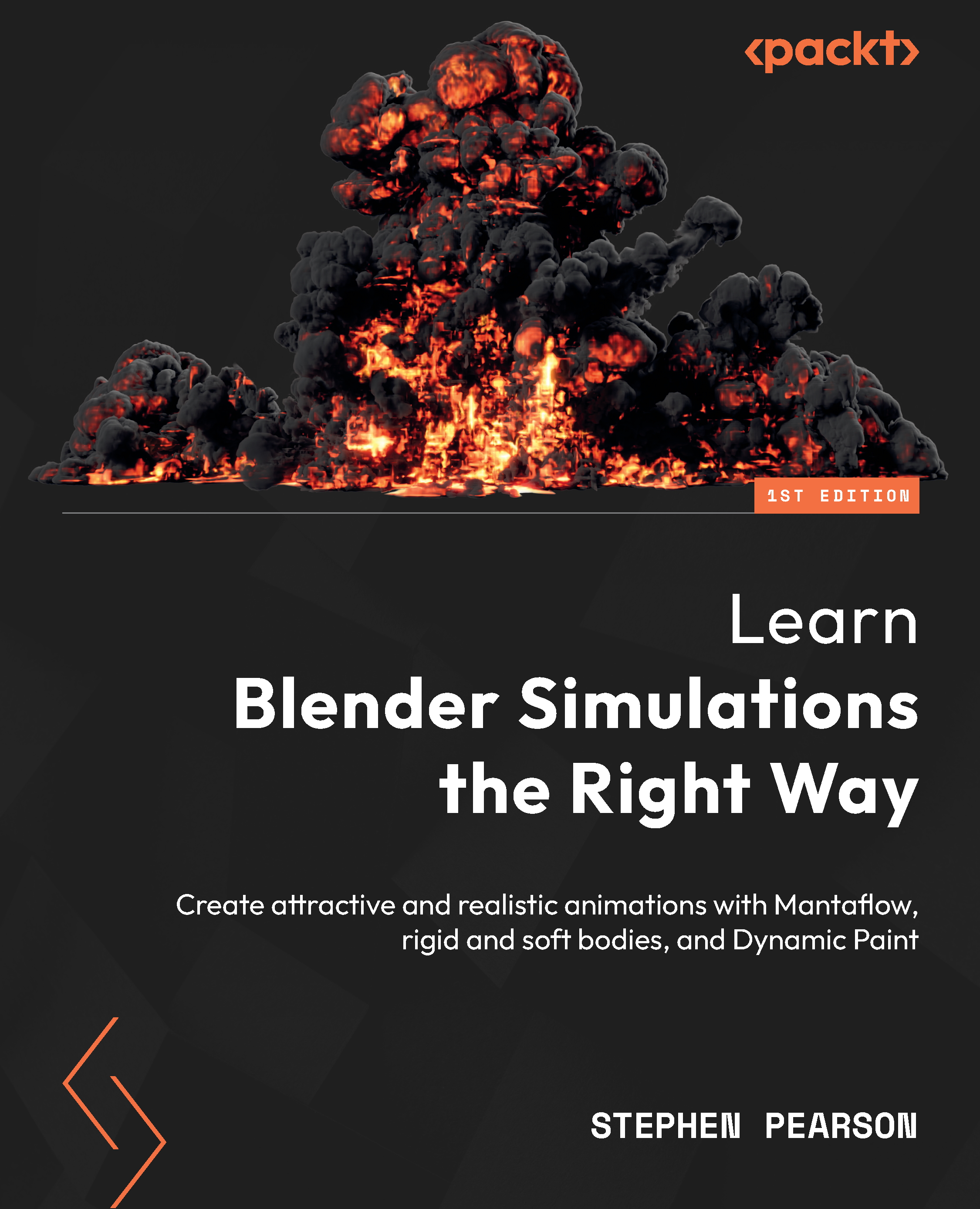Simulating the dynamic paint
As mentioned previously, since hair particles aren’t technically a mesh, we can’t use them as a Brush in the dynamic paint simulation. You may remember in the previous chapter that brushes have an option to use Particle System as Source.

Figure 13.15 – Particle System Source
This, however, does not work. This method only works for emitter particle systems and not hair particle systems, so we have to get a little creative. What we are going to do is add a cube object and instance that cube on every single hair particle. And that cube is going to be Brush in the dynamic paint simulation.
Instancing the cube
Before we add the cube, make sure the cursor is at the center of the grid. This is important because if you add a cube anywhere but the center, it will not line up with the hair when we instance it. You can snap the cursor back to the center by pressing Shift + C. Then follow these steps:
-
...
































































